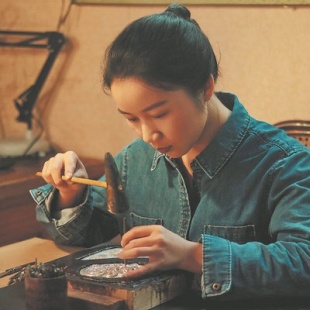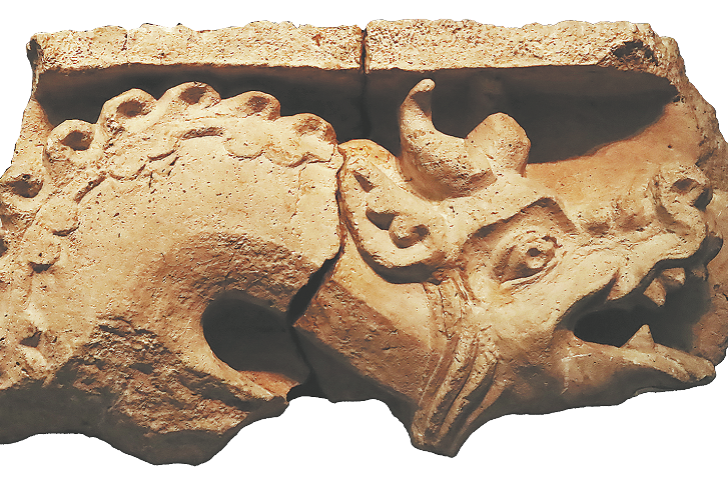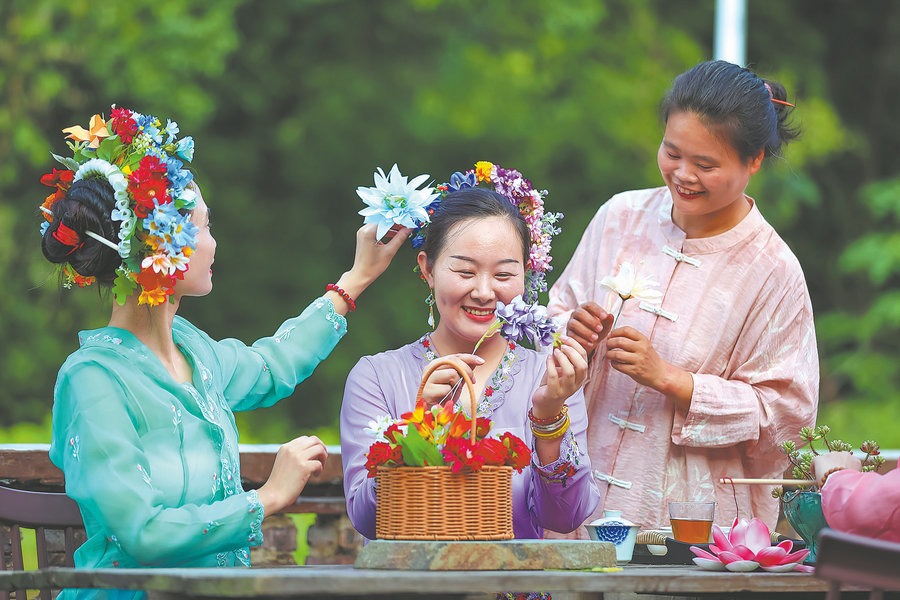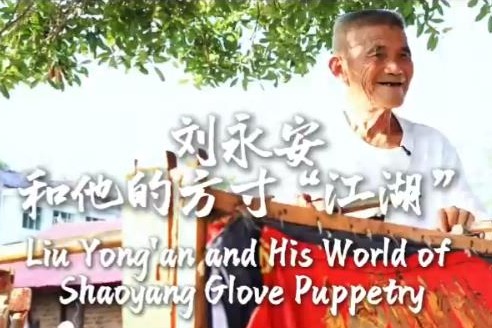Carrying the torch of craft
Miao artisans use their heritage training to inject vitality into local economies and cultural preservation efforts, Yang Feiyue reports.


Chen Jie, a Miao woman from a village in Guizhou's Qiannan Bouyei and Miao autonomous prefecture, says she owes her entrepreneurship to the ICH training program.
"Before, we had no exposure to design or color theory," says the middle-aged artisan.
Through the training initiative over the past two years, she learned how to enhance and adapt her traditional skills in batik dyeing and embroidery to suit contemporary consumers.
Chen Jie began learning her craft at a young age under the guidance of her grandmother, creating handmade textiles and garments traditionally used as dowries.
"But they just sat in a cabinet, collecting dust and mold," she recalls.
The training program not only helped her improve her craftsmanship but also gave her a deeper understanding of the business side of things.
"In the past, my dyed skirts always turned out too dark and uneven. But now, with the help of my teachers, I've learned how to create beautiful gradient colors and pair colors effectively," the woman in her 40s says.
As she explored ways to transform traditional patterns into small, marketable products like keychains, bags and accessories, Chen Jie became a rising leader in the village's growing craft industry — turning heritage skills into a source of income for herself and others.
"For example, we take local folk stories and make (their plots and characters) into patterns of hanging ornaments. These items are well-received in the market," she says.
She now leads a team of women, mostly stay-at-home mothers, disabled individuals, and rural women, who previously had limited opportunities.
"I have taught my team how to mix colors, follow patterns, and create beautiful designs that are still true to our traditions, but also have modern appeal," she says.
"They can work from home, which has given them a chance to earn an income. I provide them with designs and materials, they complete the work, and I pay them promptly."
Her operation has grown significantly, with a steady team of 30-50 core artisans who specialize in embroidery, batik dyeing, and other craftwork.
In addition, she has five team members who handle the intricate tasks of painting and waxing. These handcrafted items are sold in cities like Guangzhou of Guangdong province, Shanghai and Beijing, as well as local markets throughout her region.
Though the production is still largely handmade and cannot compete with the speed of mechanized methods, her team has achieved a monthly sales volume of 40,000 to 50,000 yuan ($5,576-$6,970).
"Last year, we did quite well … and the orders keep coming in," she says.
"The best part is hearing our workers say, 'As long as we're earning enough to feed our families, we're happy'. For us, that's the most important thing."





































